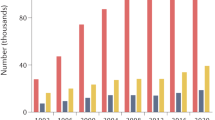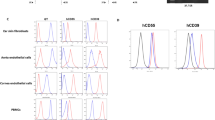Abstract
In order for xenotransplantation to become a clinical reality, and fulfill its promise of overcoming shortages of human organs and tissues, rejection mediated by the host's immune system must first be overcome. In primates, preformed natural antibodies that bind the carbohydrate antigen Galα1-3Galβ1-4GlcNAc-R (αGal), which is synthesized by UDP galactose:ß-D-galactosyl-1,4-N-acetyl-D-glucosaminide α(1-3)galactosyltransferase (E.C. 2.4.1.151) or simply αGT, mediate rigorous rejection of transplanted pig organs and tissues. In αGT knockout mice (GT0 mice), which like humans contain in their serum antibodies that bind αGal, expression of a retrovirally transduced αGT in bone marrow-derived cells is sufficient to prevent production of αGal-reactive antibodies. Here, we demonstrate that reconstitution of lethally irradiated GT0 mice with αGT-transduced bone marrow cells from GT0 littermates prevents antibody-mediated rejection of cardiac transplants from wild-type mice. These data suggest that gene therapy can be used to induce immunological tolerance to defined antigens and thereby overcome transplant rejection.
This is a preview of subscription content, access via your institution
Access options
Subscribe to this journal
Receive 12 print issues and online access
$259.00 per year
only $21.58 per issue
Buy this article
- Purchase on Springer Link
- Instant access to full article PDF
Prices may be subject to local taxes which are calculated during checkout






Similar content being viewed by others
References
Sachs DH . The pig as a potential xenograft donor Pathol Biol 1994 42: 217–219
Cooper DKC et al. The pig as potential organ donor for man Cooper DKC (eds); Xenotransplantation: The Transplantation of Organs and Tissues Between Species Springer-Verlag 1991 481–500
Bracy JL et al. Xenoreactive natural antibodies Cell Mol Life Sci 1999 56: 1001–1007
Cooper DKC, Koren E, Oriol R . Oligosaccharides and discordant xenotransplantation Immunol Rev 1994 141: 31–58
Sandrin MS, McKenzie IF . Galα(1,3)Gal, the major xenoantigen(s) recognised in pigs by human natural antibodies Immunol Rev 1994 141: 169–190
Platt JL . Hyperacute xenograft rejection Cooper DKC (eds); Xenotransplantation Springer 1997 8–16
Bach FH et al. Barriers to xenotransplantation Nat Med 1995 1: 869–873
Buhler L et al. Xenotransplantation – state of the art – update 1999 Frontier Biosci 1999 4: 416–432
Thall AD, Maly P, Lowe JB . Oocyte Gal alpha 1,3Gal epitopes implicated in sperm adhesion to the zona pellucida glycoprotein ZP3 are not required for fertilization in the mouse J Biol Chem 1995 270: 21437–21440
Thall A, Murphy H, Lowe JB . Alpha1,3-galactosyltransferase deficient mice produce cytotoxic natural anti-Gal antibodies Transplant Proc 1996 28: 561–562
Yang Y-G et al. Tolerization of anti-Galα-3Gal natural antibody-forming B cells by induction of mixed chimerism J Exp Med 1998 187: 1335–1342
Owen RD . Immunogenetic consequences of vascular anastomoses between bovine twins Science 1945 102: 400–401
Billingham RE, Brent L, Medawar PB . Actively acquired tolerance to foreign cells Nature 1953 172: 603–606
Sharabi Y et al. Specific tolerance induction across a xenogeneic barrier: production of mixed rat/mouse lymphohematopoietic chimeras using a nonlethal preparative regimen J Exp Med 1990 172: 195–202
Abramowicz D, Bruyns C, Goldman M . Chimerism and cytotoxic T lymphocyte unresponsiveness after neonatal injection of spleen cells in mice Transplantation 1987 44: 696–701
Ildstad ST, Sachs DH . Reconstitution with syngeneic plus allogeneic or xenogeneic bone marrow leads to specific acceptance of allografts or xenografts Nature 1984 307: 168–170
Kawai T et al. Mixed allogeneic chimerism and renal allograft tolerance in cynomolgus monkeys Transplantation 1995 59: 256–262
Bracy JL, Sachs DH, Iacomini J . Inhibition of xenoreactive natural antibody production by retroviral gene therapy Science 1998 281: 1845–1847
Bracy JL, Iacomini J . Induction of B cell tolerance by retroviral gene therapy Blood 2000 96: 3008–3015
McKenzie IF et al. A murine model of antibody-mediated hyperacute rejection by galactose-alpha(1,3)galactose antibodies in Gal o/o mice Transplantation 1998 66: 754–763
Pearse MJ et al. Anti-Gal antibody-mediated allograft rejection in alpha1,3-galactosyltransferase gene knockout mice: a model of delayed xenograft rejection Transplantation 1998 66: 748–754
Calne RY . Organ transplantation between widely disparate species Transplant Proc 1970 2: 550–556
Sablinski T et al. Xenotransplantation of pig kidneys to nonhuman primates: I. Development of the model Xenotransplantation 1995 2: 264–270
Collins AB . Immunofluorescence Colvin RB, Bhan AK, McCluskey RT (eds); Diagnostic Immunopathology Raven Press 1995 699–710
Corry RJ, Winn HJ, Russell PS . Primarily vascularized allografts of hearts in mice The role of H-2D H-2K and non-H-2 antigens in rejection Transplantation 1973 16: 343–350
Ohdan H et al. Mixed chimerism induced without lethal conditioning prevents T cell- and anti-Gal alpha 1,3Gal-mediated graft rejection J Clin Invest 1999 104: 281–290
Finer MH et al. kat: a high-efficiency retroviral transduction system for primary human T lymphocytes Blood 1994 83: 43–50
Bagley J et al. Long-term expression of the gene encoding green fluorescent protein in murine hematopoietic cells using retroviral gene transfer Transplantation 1998 65: 1233–1240
Russell PS et al. Coronary atherosclerosis in transplanted mouse hearts. II. Importance of humoral immunity J Immunol 1994 152: 5135–5141
Acknowledgements
The authors wish to thank Drs Richard C Mulligan and Jeng-Shin Lee for providing the MMP retroviral vector and packing system, as well as for large scale production of VSV-g pseudotyped viruses, Drs David H Sachs and Joren Madsen for critically reading the manuscript, Patricia DellaPella for preparing histology specimens, and members of the Iacomini Laboratory for helpful discussions. This work was supported in part by NIH grants AI44268 and AI43619 to JI. Jennifer L Bracy is supported in part by NIH Training grant T32 AI 07529.
Author information
Authors and Affiliations
Rights and permissions
About this article
Cite this article
Bracy, J., Chase, C., Russell, P. et al. Induction of molecular chimerism by gene therapy prevents antibody-mediated heart transplant rejection. Gene Ther 8, 1738–1744 (2001). https://doi.org/10.1038/sj.gt.3301581
Received:
Accepted:
Published:
Issue Date:
DOI: https://doi.org/10.1038/sj.gt.3301581
Keywords
This article is cited by
-
Tolerance to MHC class II disparate allografts through genetic modification of bone marrow
Gene Therapy (2013)
-
Gene therapy to inhibit xenoantibody production using lentiviral vectors in non-human primates
Gene Therapy (2007)
-
Gene Therapy Progress and Prospects: Gene therapy in organ transplantation
Gene Therapy (2003)



